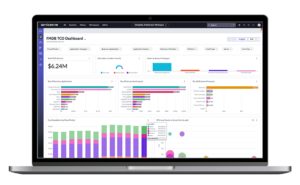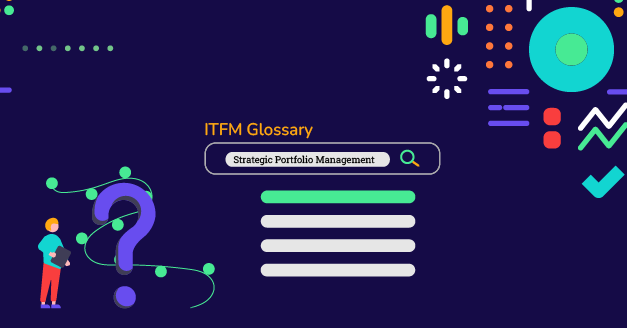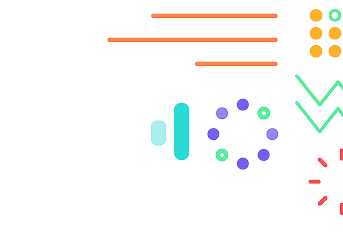If you’re an IT expert needing to learn about finance—or vice versa—this ITFM glossary of terms used in IT financial management can help you understand the basics.
- Activity-Based Costing (ABC)
- Actuals
- Allocation
- Amortization
- Application Portfolio Management (APM)
- Applications
- Asset Management Database
- Benchmarking
- Bill of IT
- Capital Expenditure (CapEx)
- Change-the-Business (CTB)
- Chargeback
- Compute
- Configuration Management Database (CMDB)
- Cost Centers
- Cost Modeling
- Cost Pools and Sub-Pools
- Depreciation
- Economic Value Added (EVA)
- End User
- Epic
- FinOps
- Forecast
- General Ledger (GL)
- Grow-the-Business (GTB)
- Hard Costs
- Infrastructure & Operations (I&O)
- Investment in Innovation
- IT Asset Management (ITAM)
- IT Financial Management (ITFM)
- IT Operations Management (ITOM)
- IT Spend Ratio
- Operating Expenditure (OpEx)
- Portfolio
- Project Management Office (PMO)
- Project Portfolio Management (PPM)
- Run/Grow/Transform
- Run-the-Business (RTB)
- ServiceNow
- Services
- Showback
- Soft Costs
- Story
- Strategic Portfolio Management (SPM)
- Technology Business Management (TBM)
- Technical Debt
- Total Cost of Ownership (TCO)
- Towers and Sub-Towers
- Transform-the-Business (TTB)
- Unit Cost
ITFM Glossary
Activity-Based Costing (ABC)
Activity-based costing is a method for assigning costs to specific IT services or projects based on the resources it consumes. ABC requires first determining the activities that make up the service’s total cost based on resource consumption data such as labor hours, floor space and gigabytes of storage. ABC allows you to tie consumption to cost and find ways to control costs with tradeoffs.
Actuals
Compared with estimated or projected costs, actuals refer to real, documented expenses incurred by an organization over a given fiscal period. Actuals are often compared against budgeted expenses to determine variances or differences.
Allocation
Allocation is the assignment of a cost to one or more groups or objects, typically used to distribute IT costs across different business units. Allocation amounts are often based on actual or planned consumption by percentage of revenue or employee count.
Amortization
Amortization is a way to spread out the cost of an asset over its useful life, and is applied to intangible assets like software. Amortization splits up costs into smaller amounts over time rather than listing the entire expense upfront. This helps better align expenses with benefits received from the software as it declines in value due to factors like technology advances or licensing agreements.
Application Portfolio Management (APM)
Application portfolio management (APM) involves categorizing, evaluating and prioritizing all the applications used in an organization based on factors like importance, cost and alignment with business goals. APM helps companies make better decisions about which applications to keep, update, replace or retire to ensure efficient resource use.
Applications
In the context of ITFM, applications or apps are software tools that the business and external partners use to deliver a business service.
Asset Management Database
An asset management database stores physical and financial information about IT assets, including location, inventory, ownership, cost and maintenance. Assets may be tangible, such as hardware and computers, as well as intangible, such as licenses and contracts.
Benchmarking
Benchmarking is the process of comparing cost, cost ratios, performance and other metrics against those of another group, time period or other variables. Typically used to compare performance against industry peers, benchmarking can also be applied to comparisons across variables such as location, vendor or IT consumer.
Bill of IT
A bill of IT is an itemized summary of IT costs and services presented to a business unit, department, government agency or other consumer over a monthly or quarterly time period. Bill of IT shows the cost or charges for IT services, assets or labor resources consumed, based on actual cost or agreed-upon prices.
Capital Expenditure (CapEx)
Capital expenditures are investments in assets or projects that add long-term value to an organization, for example infrastructure, technology or equipment purchases.
Change-the-Business (CTB)
The opposite of run-the-business, change-the-business (CTB) refers to spending aimed at growing or transforming the business. As such, it includes grow-the-business and transform-the-business investments.
Chargeback
Chargeback is similar to showback, providing added accountability by billing individual departments for their IT costs and usage. In a chargeback model, each department is responsible for their own IT budget and is required to pay back IT for the resources it uses.
Compute
Compute is an IT resource tower comprised of devices and software that run applications, software and system services. Compute includes various physical and virtual servers as well as their direct costs in terms of hardware, software, labor and outside services.
Configuration Management Database (CMDB)
A configuration management database (CMDB) stores information about configuration items (CIs) or components that comprise your IT ecosystem. Examples include hardware, software, servers and network devices. Understanding the relationships between CIs helps determine the impact of changes so you can plan for them with minimal disruption.
Cost Centers
A cost center is a specific organizational unit such as a department or division that is responsible for managing its budgeted and actual costs.
Cost Modeling
Cost modeling analyzes the financial impacts of different scenarios so organizations can make data-driven allocation decisions driven by a specific set of rules and metrics.
Cost Pools and Sub-Pools
Cost pools are simple categories used to make allocations in cost modeling. Examples include labor, hardware and software. Cost pools can be broken down further into sub-pools such as expenses, leases and management.
Depreciation
Depreciation is way to allocate costs over an asset’s useful life that reflects its decrease in value over time due to normal wear and tear. Depreciation is used to show loss in value of fixed assets like buildings, equipment and hardware.
Economic Value Added (EVA)
Economic value added (EVA) is a measure of the value created by IT investments in terms of shareholder returns. EVA provides a measure of profit contribution by comparing the return on investment to the cost of that capital investment.
End User
End user is an IT resource tower comprised of end-user devices and support, including the costs to build, manage and run those devices. Sub-towers here include workspace devices, mobile devices and software such as email, word processing and spreadsheets.
Epic
In agile software development, an epic is comprised of a collection of stories that share a business objective.
FinOps
FinOps or financial operations is a practice that attempts to bring financial accountability to cloud spending across an organization. While FinOps brings together teams such as IT, DevOps and finance, it only still only accounts for a portion of IT spending.
Forecast
Forecasted spending is an estimate of expenses likely to be incurred during the remaining fiscal period plus actual spending up to the current cutoff date. Forecasts help anticipate budget variances so budget owners can make adjustments as necessary.
General Ledger (GL)
The general ledger (GL) refers to the core accounting record summarizing all of an organization’s financial transactions.
Grow-the-Business (GTB)
Grow-the-business (GTB) is a category of spending for investments that increase business volume, revenue and/or profit, for example new product development. GTB can include operating expenditures before capitalization begins as well as capital expenditures that drive business growth.
Hard Costs
In ITFM, hard costs include the tangible expenses directly attributable to an IT project. Hard costs include expenses like hardware purchases, software licenses and training costs.
Infrastructure & Operations (I&O)
Infrastructure and Operations (I&O) teams are responsible for managing an organization’s IT resources and data. I&O manages the IT infrastructure of an organization, including servers, networks, computers, security and more.
Investment in Innovation
Investment in innovation is a core tenet of TBM, focusing on ensuring the organization allocates adequate funding to innovation-driven projects and investments.
IT Asset Management (ITAM)
IT asset management (ITAM) tracks an organization’s IT assets from procurement to disposal to maximize their value and reduce costs. ITAM leverages financial and inventory data to optimize IT resource use and ensure strategic IT decision-making.
IT Financial Management (ITFM)
IT financial management (ITFM) is a comprehensive set of best practices for tracking all IT-related expenses down to a granular level. ITFM helps ensure efficient IT resource allocation and cost control, giving organizations full visibility into IT spend to reduce waste and guide smarter investment.
Download your free eBook on Dispelling the 8 Biggest ITFM & TBM Misconceptions
IT Operations Management (ITOM)
IT operations management (ITOM) focuses on monitoring, managing and maintaining IT services. ITOM encompasses the processes managed by IT departments, including administration, support and deployment, based on internal policies and IT requirements.
IT Spend Ratio
IT spend ratio is a metric calculated by dividing IT spending by overall business revenue. Organizations should avoid using this metric alone to evaluate IT spending, as it is a rough measure that requires additional context.
Operating Expenditure (OpEx)
Operating expenses encompass all the day-to-day costs involved in running an organization, for example rent, salaries and utilities.
Portfolio
Portfolio refers to a group of projects, services, applications, technologies, assets or vendors supported by IT. Portfolio management helps align expenditures with business goals, understanding that investments in one area are made at the expense of another.
Project Management Office (PMO)
The project management office (PMO) is responsible for standardizing project management processes across the organization. The PMO manages the project management standards and metrics at an enterprise level.
Project Portfolio Management (PPM)
Project portfolio management (PPM) is the practice of selecting, planning and executing IT projects based on an organization’s goals and success criteria. PPM draws on project management principles to keep projects on track and minimize cost overruns.
Run/Grow/Transform
Run/Grow/Transform is a framework for categorizing spending into three main areas: Run-the-business, grow-the-business and transform-the-business. Organizations often try to reduce the proportion of run-the-business spending to ensure a relatively larger ratio of grow-the-business and transform-the-business spending.
Run-the-Business (RTB)
Run-the-business (RTB) is a category of spending that covers daily business operations, including both operating and capital expenditures. RTB includes primarily non-discretionary expenditures and is the opposite of change-the-business.
ServiceNow
ServiceNow is the market-leading IT service management platform, integrating a wide range of tools to manage IT operations, services and workflows. This includes third-party applications like Nicus, the only ITFM application available as a standalone cloud application or running natively on ServiceNow.
Services
In ITFM, services refer to the work done to perform a business process or deliver a technical outcome. Services are often listed out within a service catalog, with internal pricing noted to ensure consumers understand their charges for using them.
Showback
Showback is the process of reporting to individual departments their IT costs and usage, driving awareness and visibility into resource use. In a showback model, IT maintains the budget without cost recovery.
Soft Costs
Soft costs in ITFM refer to intangible or indirect expenses of an IT project, which can be more difficult to quantify. Soft costs include Productivity losses, operational disruptions and opportunity costs due to project delays.
Story
A story is an agile tool describing a feature from the user’s perspective, representing the smallest unit of work in software development.
Strategic Portfolio Management (SPM)
Strategic portfolio management focuses on how to evaluate, select and manage projects in alignment with internal resources in order to achieve an organization’s goals.
Technology Business Management (TBM)
Technology business management (TBM) is a prescriptive approach to aligning IT spending with business priorities, representing a subset of all ITFM best practices. Where more than one best practice exists for an activity, TBM dictates which one to use based on recommendations for the average organization. Find out more about the differences between ITFM and TBM here.
Technical Debt
Technical debt is comprised of the hidden costs and inefficiencies that result from taking shortcuts in software development rather than implementing the optimal solution. Also called code debt, technical debt sacrifices long-term code stability for implementation speed while increasing long-term costs such as maintenance costs.
Total Cost of Ownership (TCO)
Total cost of ownership (TCO) includes all of the expenses required to purchase or build a technology, service or other asset, as well as the ongoing costs of maintaining and operating it.
Towers and Sub-Towers
IT Towers and sub-towers are a way to categorize direct IT costs by technology type, and are sometimes referred to as domains or functions. Tower groupings include categories like data center, computer, storage, network, and end user.
Transform-the-Business (TTB)
Transform-the-Business (TTB) is a category of spending comprised of investments and spending used to fuel company growth and long-term competitiveness. TTB can include both operating and capital expenditures, typically in the context of revolutionary investments such as those made to access new markets, make efficiency improvements or launch completely new products and services.
Unit Cost
Unit cost is a metric that takes the total cost of an IT service of product and divides it by the number of units such as users. Unit cost helps teams understand changes in cost over time, as well as how total cost of ownership (TCO) relates to volume.
Download your free eBook on How to Produce an Effective Bill of IT Using Showback or Chargeback







